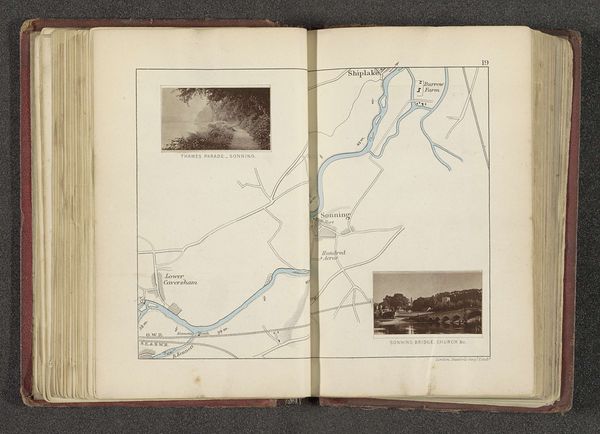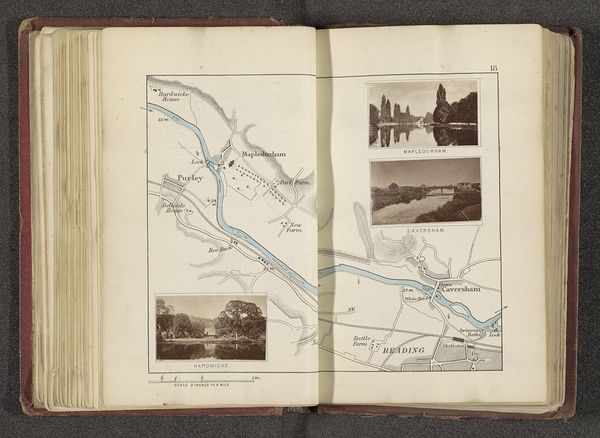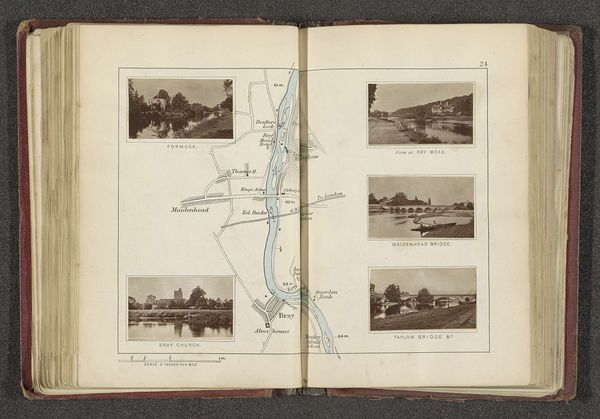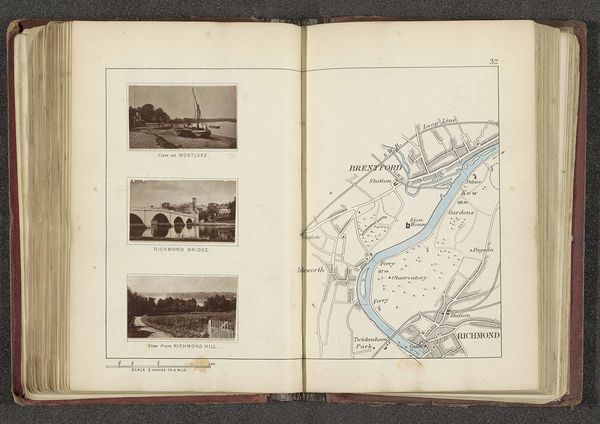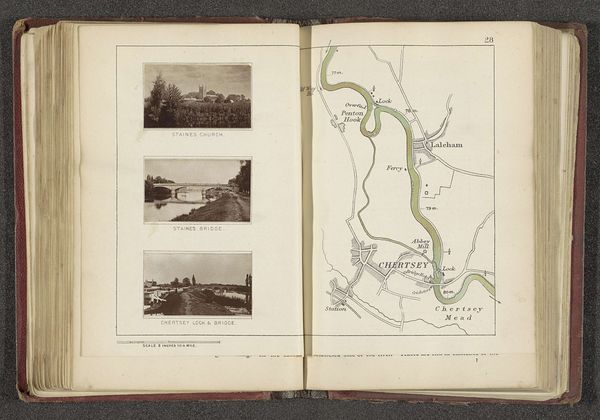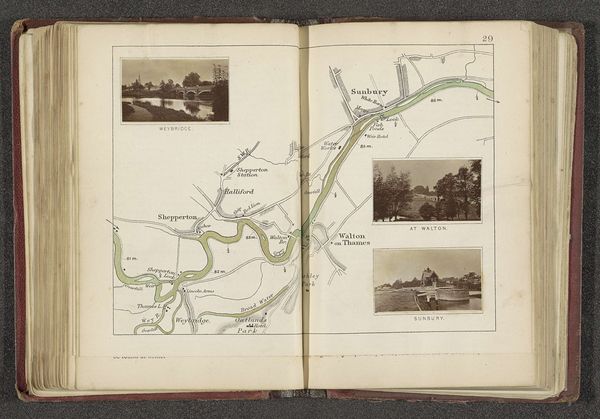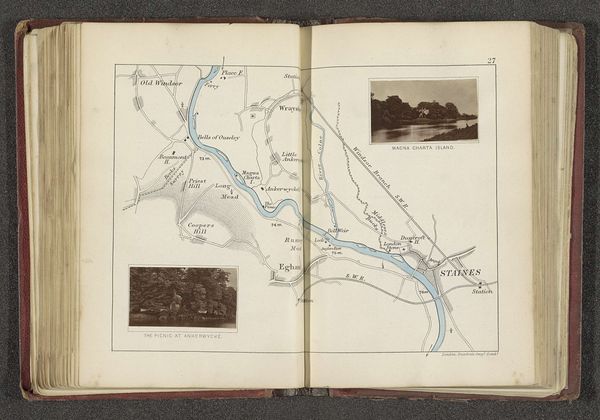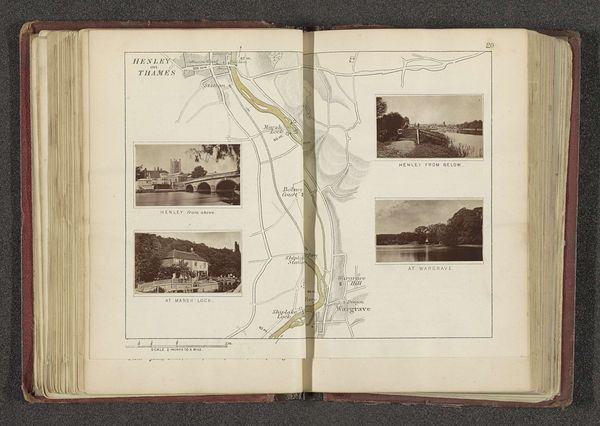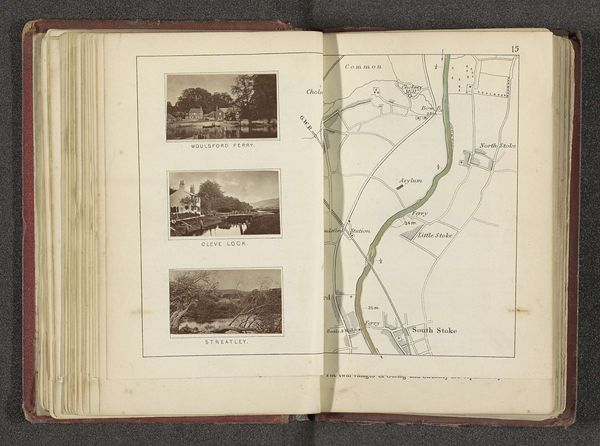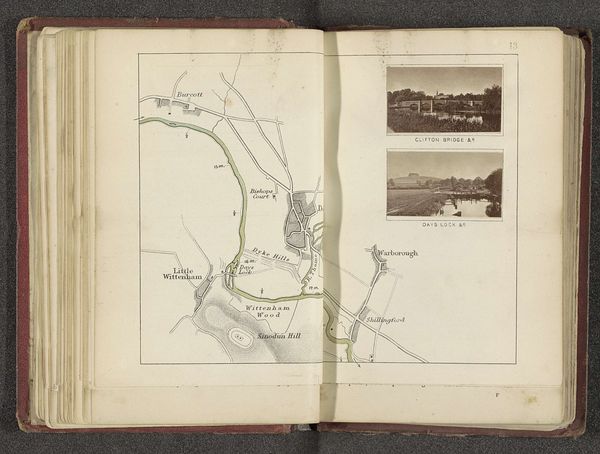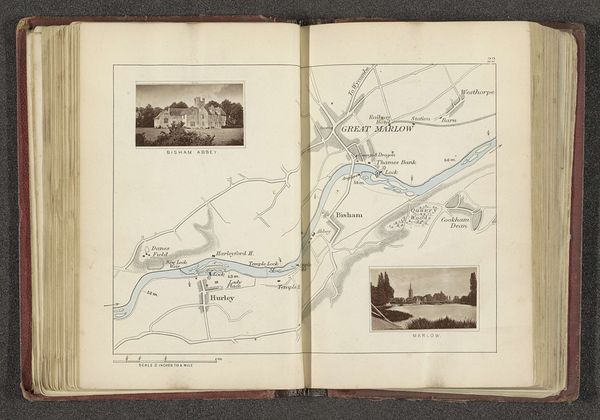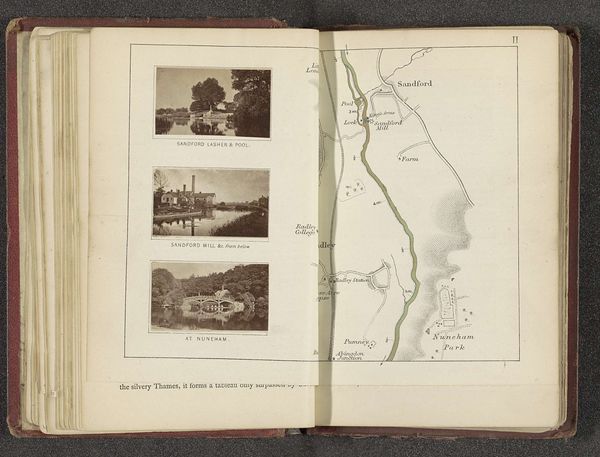
drawing, mixed-media, print, etching, paper, photography
#
drawing
#
mixed-media
# print
#
etching
#
sketch book
#
landscape
#
river
#
paper
#
photography
#
coloured pencil
Dimensions: height 182 mm, width 227 mm
Copyright: Rijks Museum: Open Domain
Curator: At first glance, the arrangement here is striking; the geometric juxtaposition of a map with inset photographs offers a layered perspective. It appears precise yet quaint. Editor: We're looking at “Kaart met drie afbeeldingen van plaatsen langs de Theems,” or “Map with three images of places along the Thames,” which has been attributed to Henry W. Taunt, dating to before 1879. It’s a mixed-media piece: a combination of drawing, etching, print and photography on paper. Curator: The use of both a representational map and the realism of photographs creates an interesting dialogue about how we document and understand place. It suggests a burgeoning of travel and tourism during the period. Editor: Absolutely, and the linear qualities of the map are beautifully balanced by the more atmospheric photography. Note how the Thames itself acts as a compositional anchor, snaking through both cartography and captured images. Curator: I am immediately drawn to that duality, and consider what it reveals about our relationship to landscape: the Thames as a working river, yet simultaneously a source of artistic and perhaps spiritual contemplation, a liminal zone… Editor: Consider, also, how the very selection and framing within the photographic insets transforms snippets of lived reality into discrete objects of study. Observe the different techniques on the water, and also the subtle changes of color that can come about with mixed media, especially those caused by age. Curator: Yes, they aren’t simple records; there’s a curatorial impulse even within those early snapshots, selecting what deserves memorialization. And that blending of etching and photography hints at the transitions of representing landscape taking place during the era. Editor: Precisely. Ultimately, I’m left pondering how these careful representations invite the viewer to participate – to chart their own path through these scenes. It's both instructive and contemplative. Curator: Indeed; it leaves one with a subtle sense of the ephemeral, both geographically and historically.
Comments
No comments
Be the first to comment and join the conversation on the ultimate creative platform.
